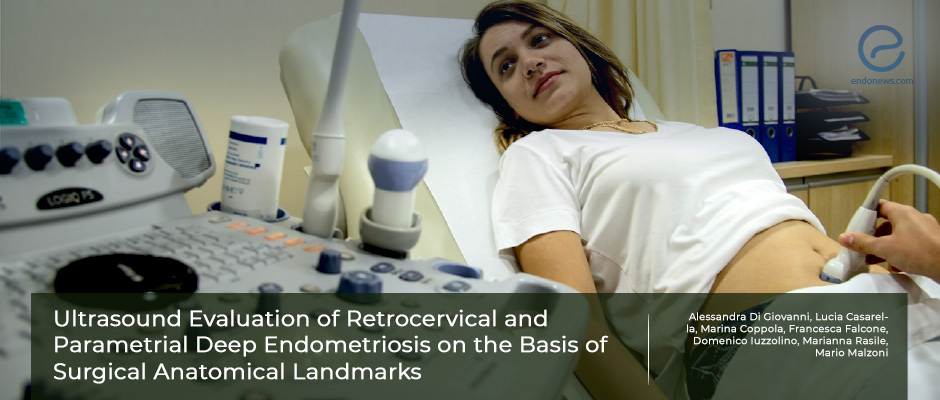Evaluation of retrocervical and parametrial deep endometriosis by detailed ultrasonography
Aug 12, 2022
Detailed preoperative imaging is useful to prevent ineffective and repeated surgical procedures.
Key Points
Highlight:
- Parametrial deep endometriosis is associated with technical problems and complications.
- A detailed preoperative imaging evaluation is crucial for clinical management.
Importance:
- Detailed transvaginal and transabdominal ultrasonographic imaging for deep endometriosis likely avoids ineffective and repeated surgical procedures.
What's done here:
- This retrospective study evaluated 4983 patients who underwent laparoscopic surgery for suspected deep endometriosis in a specialized endometriosis center.
- All patients received dedicated preoperative ultrasonography within one month before surgery.
- Taking the results of surgical reports as the gold standard, the results of the transvaginal and transabdominal ultrasonography combination were evaluated.
- Specifically, the sensitivity and the specificity of the ultrasonographic approach for detecting the deep retrocervical and paracervical lesions were calculated.
Key results:
- Ultrasonographic examinations showed a 2 mm. detection limit for DIE lesions in the posterolateral pelvic compartment.
- False-positive findings were related to fibrotic tissues in cases with previous surgeries, hence endometriosis histologically could not be confirmed.
- Overall, the diagnostic accuracy of ultrasound in detecting DIE was high, the sensitivity was 97-98% and the specificity was 98-100% respectively for retrocervical and parametrial areas.
Limitations of the study:
- The absence of missing data is a strength.
- The retrospective design can be considered to be a limitation.
- The findings cannot be generalized as they were obtained from a referral center with a sonographer and surgeons with extensive experience in the field.
- Another potential bias can be attributed to the high prevalence of DIE in the study population which may have affected the accuracy of ultrasound evaluation.
- Finally, the surgeons were not blinded to sonographic evaluation.
Lay Summary
The accuracy of ultrasonographic diagnosis of deep endometriosis in the retrocervical and parametrial areas may be poor due to the variable morphology of endometriotic lesions, the complex structure of the posterior parametrial compartment, and the difference in examiners' experience level. The absence of common terminology between sonographers and surgeons and the weak correlation between anatomical landmarks also may be causative factors.
The paper entitled "Ultrasound Evaluation of Retrocervical and Parametrial Deep Endometriosis on the Basis of Surgical Anatomical Landmarks" by Giovanni et al. was recently published in the "Journal of Minimally Invasive Gynecology" from the Center for Advanced Endoscopic Gynecologic Surgery Avellino, Italy, with the aim to assess the accuracy of combined transvaginal and transabdominal ultrasonographic examination in the diagnosis of retrocervical and parametrial deep endometriosis. Using the laparoscopic findings as the gold standard, they evaluated the sensitivity and specificity of preoperative sonographic evaluation.
All the ultrasonographic examinations for patients with clinically suspected endometriosis were performed by a single operator experienced in gynecologic ultrasound. The anatomical criteria for identification of endometriotic lesions and their extent were evaluated by referring to retrocervical (torus uterinus and uterosacral ligaments) and parametrial anatomic landmarks.
Statistical analyses revealed a high diagnostic accuracy of ultrasound in detecting deep endometriosis, the sensitivity was 97-98% and the specificity was 98-100% respectively for retrocervical and parametrial areas.
In conclusion, the authors stated that "detailed imaging of deep endometriosis lesions is crucial for the clinical management of affected patients. It can facilitate the optimization of surgical timing and strategies while preventing ineffective, repeated even harmful procedures".
Research Source: https://pubmed.ncbi.nlm.nih.gov/35732241/
ultrasonography laparoscopy parametrium uterosacral ligaments DIE endometriosis.

